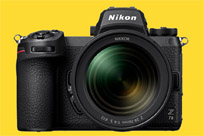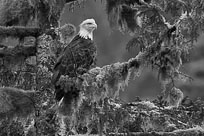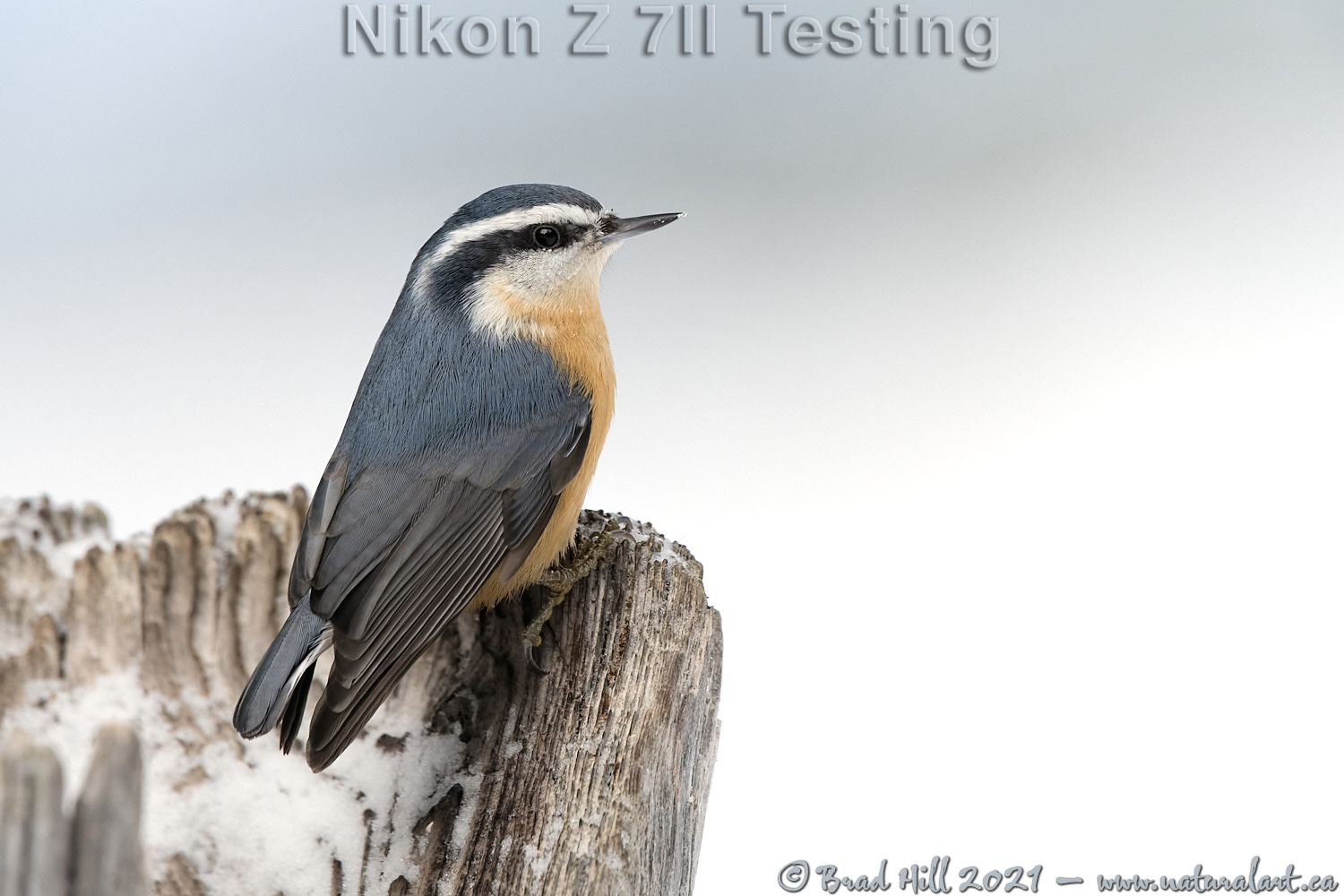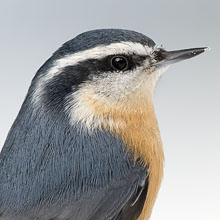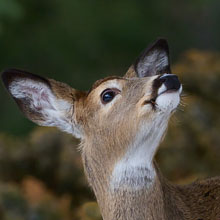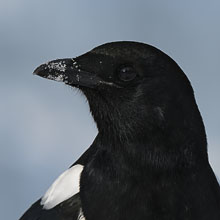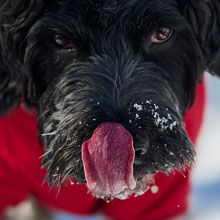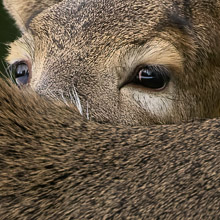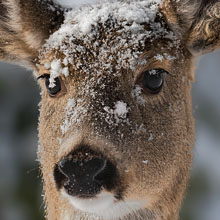Availability: Undetermined - Enquiries?
In the Field
Z 7II Testing - Red-breasted Nuthatch. Findlay Creek Region (East Kootenays), British Columbia, Canada. December 27, 2020.
I began testing my Nikon Z 7II in December of 2020, right when we were in the midst one of the worst stretches of the COVID-19 pandemic. At that time my ability (and willingness) to travel were quite restricted so I opted to begin my testing of the camera by focusing (pardon the pun) on very local subject matter, especially our resident avifauna. Given that one of the areas of biggest concern about the the 2nd generation Z-cameras was how well (and how fast) their AF systems perform, spending time photographing lightning quick little dickie birds seemed like a particularly good way to spend a chunk of my camera-testing time! To my way of thinking, if the Z 7II could focus fast enough to capture a high percentage of sharp shots of small and "nervous" little birds that never sit still for more than a second (and often far less than that!), then it should be able to handle a large proportion of my "normal" wildlife photography of much larger - and much less frenetic - subjects like bears, wolves, whales, and more.
So just how did the Z 7II and I get along when photographing chickadees, nuthatches, creepers, nutcrackers, and assorted woodpeckers? Actually...pretty darned well! The image shown above "typified" the result quality I obtained in the vast majority of my shots. Like with the majority of my wildlife shooting, I was using AF-C servo mode combined with single-point area mode (I'm real picky about exactly which part of a bird I focus on...so wide-area focusing modes are a no-go for me when photographing small birds). I found the focusing to be exceptionally accurate and DEFINITELY fast enough to nab initial focus in the fractions of a second necessary to capture shots of these quick-moving little beasts. And, the Z 7II did a great job of holding focus on the birds as the hopped and flitted around (as long as I was quick enough to move with the birds!).
It's important to keep things in perspective here - I'm certainly NOT claiming that my Z 7II will do as good a job of keeping a fast-flying shorebird or duck in flight in perfect focus as it barrels down on me at water level as my D6 does. But as an ex-owner of a D850 I'm also fully aware that that camera couldn't match my D5 or D6 in AF performance either - and I'm left wondering if ANY currently available 40+ MP camera could! And the reality is that those type of extreme action shots represent only a small proportion of the wildlife photography I do in any given year. Capturing those sort of action shots is one of the primary reasons I own a D6.
What about "wake-up lag" (the time it takes a camera that's turned on but in "stand-by mode" to being fully ready to shoot with the EVF on and the subject in focus) of the Z 7II? As any mirrorless camera owner knows this lag impacts on the feeling of "snappiness" a camera has and, at times, impacts on the successful capture rate of some spontaneous scenes/events. In this particularly case it could definitely contribute to me missing some shots of the birds. Anecdotally it seems to me that the lag of the Z 7II is a bit shorter than that of the Z7, but the difference isn't huge. And it is noticeably longer than on a fast DSLR (like my D6). The workaround that I successfully employed with the Z 7II when shooting small birds is to avoid the lag entirely by simply temporarily resetting the standby timer (Custom setting C3) to a long interval (I chose 30 mins). Yes, this does drain the battery quicker, but because I use the MB-N11 battery grip with two EN-EL15C batteries with my Z 7II the battery life isn't a limiting factor for me.
So...as a strong first impression (and after forking out the bucks for it) I'm quite happy to find that the Z 7II will very competently handle a large proportion of my wildlife shooting (and absolutely excel at capturing the animalscapes and "opportunistic landscapes" I encounter). And, for multiple reasons, I will be using the Z 7II for more of my wildlife shooting than I did with the generation 1 Z7.
Here's a larger version (2400 pixel) of this Lovely little nuthatch for your perusal:
• Z 7II Testing - Red-breasted Nuthatch: Download 2400 pixel image (JPEG: 1.0 MB)
ADDITIONAL NOTES:
1. This image - in all resolutions - is protected by copyright. I'm fine with personal uses of them (including use as desktop backgrounds or screensavers on your own computer), but unauthorized commercial use of the image is prohibited by law. Thanks in advance for respecting my copyright!
2. Like all wildlife photographs on this website, this image was captured following the strict ethical guidelines described in The Wildlife FIRST! Principles of Photographer Conduct. I encourage all wildlife photographers to always put the welfare of their subjects above the value of their photographs.
Behind the Camera
Z 7II Testing - Red-breasted Nuthatch. Findlay Creek Region (East Kootenays), British Columbia, Canada. December 27, 2020.
Digital Capture; Compressed RAW (NEF) 14-bit format; ISO 640.
Nikon Z 7II paired with Nikkor 180-400mm f4E with built-in TC engaged (for a total focal length of 560mm). Supported on Jobu Killarney tripod with Jobu HDMkIV gimbal head. VR on and in Sport mode. Single Point Area AF area mode.
1/640s @ 7.1; +0.67 stop exposure compensation from matrix-metered exposure setting.
At the Computer
Z 7II Testing - Red-breasted Nuthatch. Findlay Creek Region (East Kootenays), British Columbia, Canada. December 27, 2020.
RAW Conversion to 16-bit PSD file (and JPEG files for web use), including all global and selective adjustments, using Phase One's Capture One Pro 20. Global adjustments to this shot included only a decrease in the default noise reduction. Selective local adjustments performed using Capture One Pro's layers and masking tools. In this case selective adjustments were made on 8 separate layers and included one or more tweaks to sharpening, noise reduction, shadows, clarity, levels and curves, color balance, and structure (which is a Capture One Pro "thing").
Photoshop modifications were limited to the insertion of the watermark and/or text.
Conservation
Z 7II Testing - Red-breasted Nuthatch. Findlay Creek Region (East Kootenays), British Columbia, Canada. December 27, 2020.
Species Status in Canada*: This species is not designated as at risk.
The Red-breasted Nuthatch (Sitta canadensis) is a common resident of North America's boreal forests. This is a species where more people have probably heard the species than have seen it - its unique "yank, yank, yank" call is very distinctive and heard in many of North America's forests.
Like the White-breasted Nuthatch, the Red-breasted Nuthatch typically climbs head-down on the trunk of trees probing for insects and cached seeds. In winter it readily joins mixed species flocks that commonly contain chickadees and woodpeckers.
One unique characteristic of the Red-breasted Nuthatch among all of the North American nuthatches is that it regularly undergoes irruptive winter movements that appear to be driven primarily by a shortage of winter food on their breeding grounds. During irruption years, large numbers of individuals often invade uncharacteristic habitats as far south as the Gulf Coast of Louisiana and the desert washes of northern Mexico. With its propensity for long-distance movements, the Red-breasted Nuthatch is the only North American nuthatch to have crossed the Atlantic to Europe as a vagrant.
Because of the irruptive movements the Red-breasted Nuthatch is a difficult species to obtain consistent annual estimates of population sizes and density. At this point the best available data shows relatively stable populations over time (i.e., no clear trend of increases or decreases).
*as determined by COSEWIC: The Committee on the Status of Endangered Wildlife in Canada








